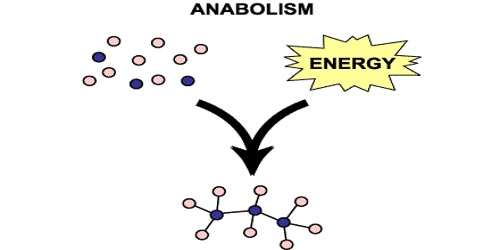Anabolism is the set of metabolic pathways that build molecules from smaller units. It is the process by which the body utilizes the energy released by catabolism to synthesize complex molecules. Enzymes take little molecules and stick them together to make bigger molecules. Some of these enzymes are anabolic steroids. Anabolic reactions are divergent processes. These reactions describe the set of metabolic reactions that build up complex molecules from simpler ones
Anabolism can be thought of as a set of metabolic processes, in which the synthesis of complex molecules is initiated by energy released through catabolism. It requires the input of energy, which can be described as an “uphill” (energy intake) process. An example of anabolism is gluconeogenesis. This is when the liver and kidneys produce glucose from noncarbohydrate sources.
There are three basic stages of anabolism.
- Stage 1 production of precursors such as amino acids, monosaccharides, and nucleotides.
- Stage 2 uses energy from ATP to turn the precursors into a reactive form.
- Stage 3 the assembly of these activated precursors into complex molecules such as proteins, polysaccharides, lipids, and nucleic acids.
Examples of Anabolic hormones
- Growth hormone: It is a protein-based peptide hormone that stimulates growth, cell reproduction, and regeneration in humans and other animals.
- Insulin: It is a hormone that is essential for regulating fat and steroids metabolism in the body. It causes the uptake of glucose from the blood by cells in the liver, muscle, and fat tissue.
- Testosterone: It is a steroid hormone found in mammals, reptiles, birds, and other vertebrates. In mammals, testosterone is mainly secreted in the testes of males and the ovaries of females.
- Estradiol: It is the predominant sex hormone present in females.
















